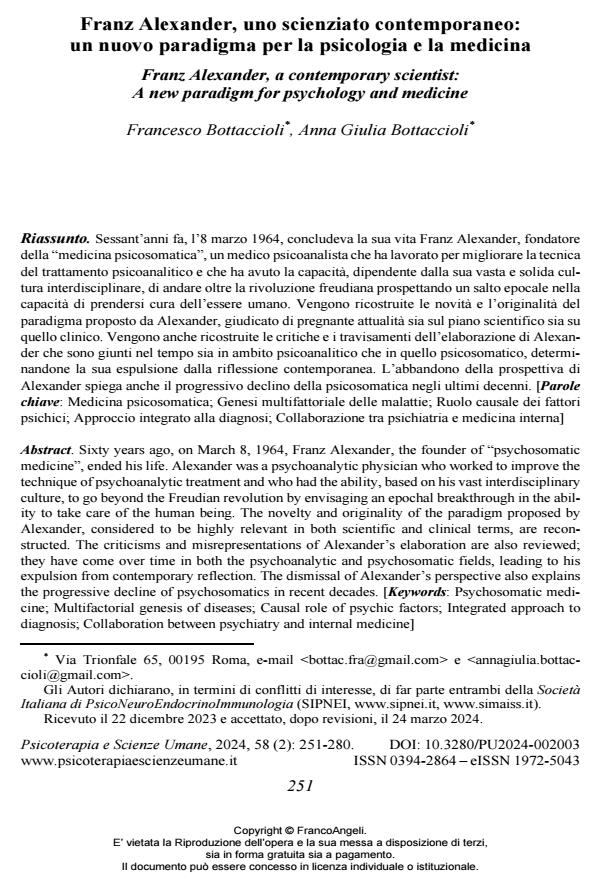Franz Alexander, a contemporary scientist: A new paradigm for psychology and medicine
Journal title PSICOTERAPIA E SCIENZE UMANE
Author/s Francesco Bottaccioli, Anna Giulia Bottaccioli
Publishing Year 2024 Issue 2024/2
Language Italian Pages 30 P. 251-280 File size 138 KB
DOI 10.3280/PU2024-002003
DOI is like a bar code for intellectual property: to have more infomation
click here
Below, you can see the article first page
If you want to buy this article in PDF format, you can do it, following the instructions to buy download credits

FrancoAngeli is member of Publishers International Linking Association, Inc (PILA), a not-for-profit association which run the CrossRef service enabling links to and from online scholarly content.
Sixty years ago, on March 8, 1964, Franz Alexander, the founder of “psychosomatic medicine”, ended his life. Alexander was a psychoanalytic physician who worked to improve the technique of psychoanalytic treatment and who had the ability, based on his vast interdisciplinary culture, to go beyond the Freudian revolution by envisaging an epochal breakthrough in the ability to take care of the human being. The novelty and originality of the paradigm proposed by Alexander, considered to be highly relevant in both scientific and clinical terms, are reconstructed. The criti-cisms and misrepresentations of Alexander’s elaboration are also reviewed; they have come over time in both the psychoanalytic and psychosomatic fields, leading to his expulsion from contem-porary reflection. The dismissal of Alexander’s perspective also explains the progressive decline of psychosomatics in recent decades.
Keywords: Psychosomatic medicine; Multifactorial genesis of diseases; Causal role of psychic factors; Integrated approach to diagnosis; Collaboration be-tween psychiatry and internal medicine
Francesco Bottaccioli, Anna Giulia Bottaccioli, Franz Alexander, uno scienziato contemporaneo: un nuovo paradigma per la psicologia e la medicina in "PSICOTERAPIA E SCIENZE UMANE" 2/2024, pp 251-280, DOI: 10.3280/PU2024-002003